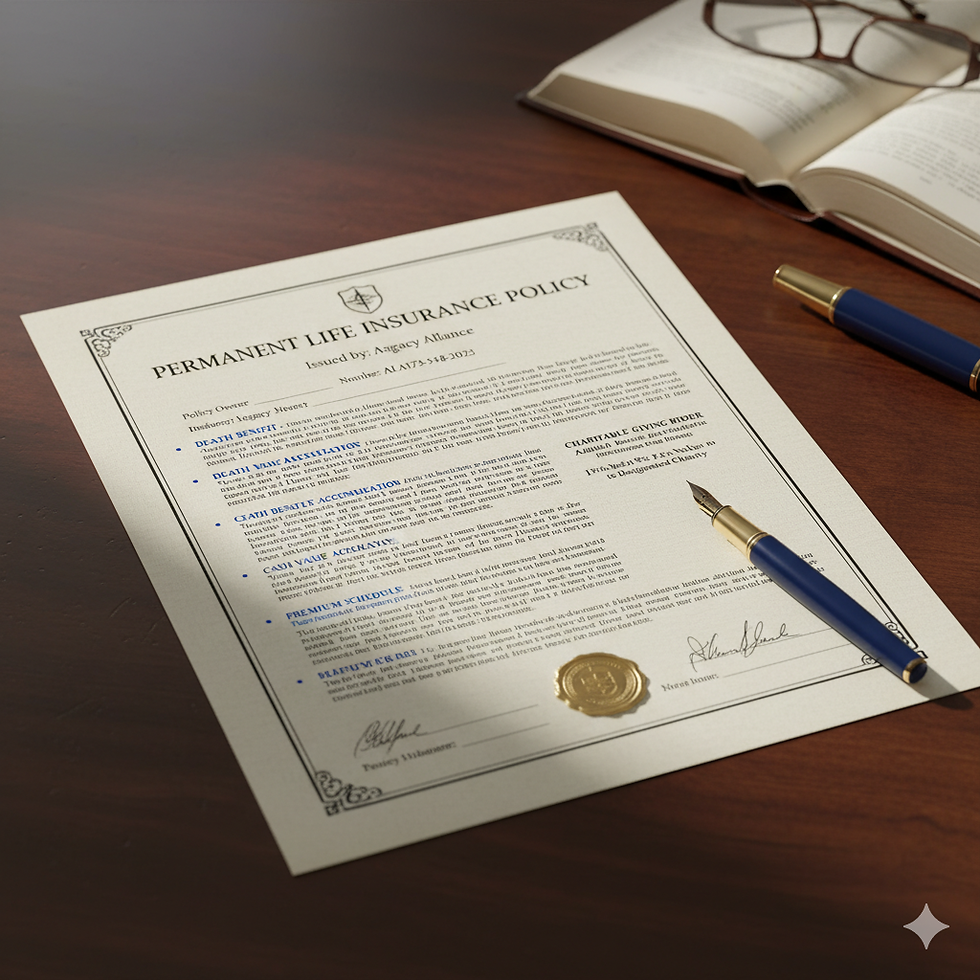Leveraging Life Insurance for Better Giving
- Laura Malone
- 6 days ago
- 3 min read
Beyond its traditional use for estate liquidity, life insurance offers a sophisticated path to a zero-tax estate plan. Gifting the policy to a charity or a charitable vehicle( such as a DAF or donor advised fund) strategically converts the asset into a powerful charitable donation, often resulting in a far greater gift and tax advantage than simply donating cash or marketable securities.

The Versatility of Life Insurance
There are four ways to gift life insurance:
Direct Donation of Existing Policy: Donors who no longer need an older life insurance policy—originally purchased for reasons like mortgage protection, children's education, or survivor income—can gift the policy directly to a charity or DAF.
For this gift to be valid, IRS regulations require the charity to become the irrevocable owner and sole beneficiary of the policy.
For tax purposes, determining the value of your charitable deduction requires a qualified appraisal. While cash-value policies (such as whole life) are generally valued at Fair Market Value (FMV), the deductible amount is capped at your cost basis. Specifically:
For a policy that is not fully paid up, the FMV is typically the lesser of the premiums paid or the policy's Interpolated Terminal Reserve (ITR) amount.
For a paid-up policy, the FMV is its replacement cost.
Direct Donation of Dividends: The annual dividends of the policy can be assigned to a charity. This eliminates out-of-pocket contributions while still creating a deduction as dividends are paid. This process can be amplified by using the dividends to purchase a new policy of which the charity becomes the irrevocable owner and beneficiary.
Primary/Contingent Beneficiary of Life Insurance Policy: Although this route will not create a current income tax deduction, it may prove the simplest to execute. It does create a federal estate tax deduction for the full amount of the proceeds payable to the charitable vehicle, regardless of policy size.
Charitable Rider: A charitable rider is an addition to a life insurance policy that would pay a specific percentage of the face value of a policy to a specific qualified charity. There is usually no additional cost, and it does not reduce the cash value/death benefit of the policy nor add a premium increase.
For illustration, if a life insurance policy had a value of $1 million with a charitable rider of 1%, then at death, the heirs of the decedent would receive the $1 million proceeds of the policy, and a specifically named charity would receive $10,000 (1% of the $1 million policy value).
Does It Make Sense to Purchase a New Life Insurance Policy?
If the individual is healthy and can pass an insurance physical, it may make sense to purchase new life insurance for the purpose of donating to charity.
The charity (or DAF) must become the owner and sole beneficiary of the life insurance policy. The donor (and possibly their spouse) would be the insured. The donor would make the premium payment directly to the charitable vehicle, and then that organization pays the premium to the insurer. The donor is able to deduct the premium amount as an income tax charitable deduction.
Conclusion
For many, life insurance is not a top of mind source for charitable gifts. However, one study cited found that more than 1 in 4 Americans who own life insurance policies say they purchased the policy with the intent of donating it to charity.
Leveraging life insurance for charity—particularly through the direct donation of an existing policy and the subsequent determination of its Fair Market Value (FMV)—is a complex process that demands professional insight. You can rely on the expertise of Generosity Nexus and their trusted partners, ensuring that the donation path aligns optimally with the donor’s financial situation and their desired charitable outcome.
Don’t hesitate to schedule an appointment to learn more about how we can help you.




Comments